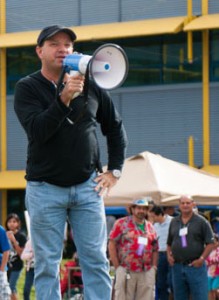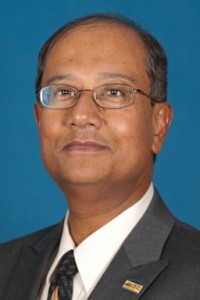COCOA, May 09, 2013— With clouds in the sky and all eyes on the weather, more than 600 elementary, middle and high school students were energized on Saturday, May 4th. Student teams—from Key West to as far away as North Carolina—gathered at UCF’s Florida Solar Energy Center on Saturday to demonstrate their Science, Technology, Engineering, Art and Math (STEAM) skills by competing at the 11th annual EnergyWhiz Olympics.

The daylong event started out cloudy and posed challenges to the solar-dependent competitions, especially the Bright House Solar Energy Cook-off and the Junior Solar Sprint (solar-powered model car) teams. Although weather conditions were less than ideal, the sun managed to peek through the clouds and provide just enough energy for the teams to get through the solar competitions. And although Energy Innovations, a full-scale solar electric design and marketing challenge, depend on the sun for their complete product demonstration, teams also created marketing pieces—such as brochures, fliers, and posters—to promote their product.
